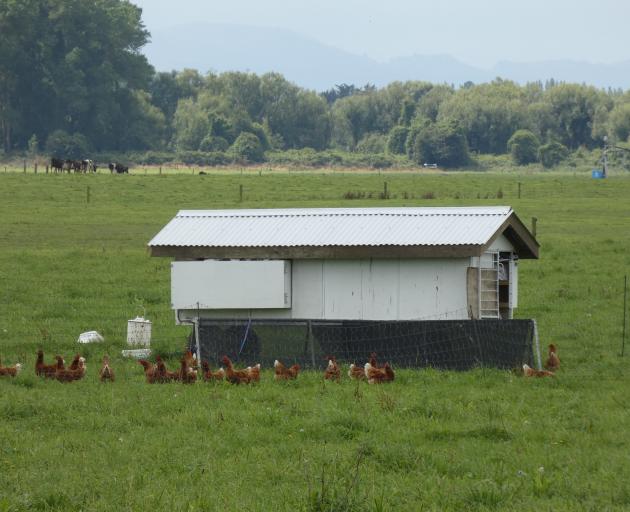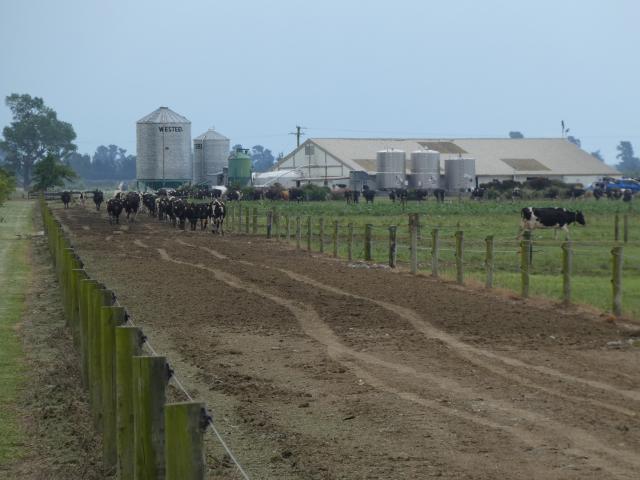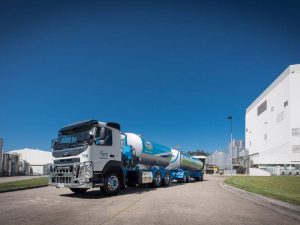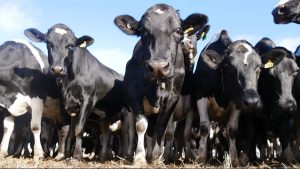
He leads a company that’s put a market garden in the middle of a Mid Canterbury dairy farm, placed half of it in regenerative farming, and lets their staff choose their own flexible rosters.
The chief executive of Align Group heads its seven dairy farms, spread between the Ashburton and Rangitata rivers, run-off blocks and a yoghurt brand and milk processing facility.
The business model is like other farms, to make money, but is also built around food production and future workplaces. This has got the full backing of group owner John Buchanan, who’s based in Queenstown and the United States.
From the beginning, the plan was to run inter-generational and sustainable farms with a view to the future.
The company’s now 10-years-old and Roberts has been there from the start, initially as the operations manager and progressing into the CEO role.
“I guess the autonomy is probably what attracted me from the start-off. That was a really key attraction and why we are still here 10 year later. That’s big, but I guess for us it’s around living by the values. It’s not enough to have values plastered on the walls to make up the wallpaper. We’ve been led by values from the heart around low-impact farming, being responsible stewards and we are one team working together for the betterment of everyone. Innovation is valued. I know these sound cliched, but they’re important.”
Perhaps the innovation that’s got most people talking is the trial that’s split one of the farms into regenerative versus conventional farming.
There’s two milk vats, two herds and two data sets with all of the data put up on the group’s website weekly for others to view and compare. Grass growth is matched against milk production through to animal health cases and profitability.

Roberts says they want to get some hard data behind regenerative farming rather than relying on emotion.
He says they’re happy to share this with other farmers — and they are not scared to challenge the status quo.
Farming without nitrogen fertiliser is an uneasy concept for many in dairy farming.
Roberts admits putting no urea on the trial farm has been a relatively polarising concept for farmers to get their head around.
Three cows are milked to the hectare on the regenerative side and 3.5 on the conventional half. This will probably be lifted by 0.5 cows/ha for each side next year.
The conventional unit produces just under 1800kg of milk solids per hectare compared with 1400kg/ha on the regenerative side. The milking rates per cow are pretty similar so the lower stocking rates account for much of the difference.
That puts the profitability about $800/ha lower than conventional farming — and much of that is being driven by the milk price during a record payout season.
Against that, there are regenerative reductions in inputs — mainly fertiliser, as well as lower supplementary feed and winter grazing costs as a result of the lower stocking ratio.
“But then on the conventional side, obviously the higher 350kg-400kg of milk solids per hectare really pays its way on a $9.20/kg payout,” Roberts says. “You know, we’ve got 20 years of conventional experience and 20 minutes of regen experience so it should be more profitable. We’ve got some work to do there, but that’s what we’re about as a trial — [to find out] what are some of the levers to pull to lift profitability.”
The “regen” trial is on 6% of their land base with an opportunity cost of about 1% so while they may not be maximising profits, it’s not the end of the world.
“I don’t want to be sitting around the board table in 10 years’ time and have completely lost our social licence to farm,” he says. “At least in 10 years I can say here’s a method with lower social impact, lower environmental impact and here’s an actual pathway forward. That’s why we are doing it now.”
He says they’re probably five to 10 years away from meaningful data, but some observations ring true.
“We think there is a lot of merit in adding diversity into your pastures and that definitely helps with the reduction of your N fertiliser. We’ve found on the regen side that of the 16 paddocks, four of them are still ryegrass and clover and they’ve performed really poorly without N. But with a bit of diversity and adding in eight to 18 pasture species, we have seen really good production in those paddocks.”
The conventional paddocks get 190 units of nitrogen/ha and other inputs, whereas the regen unit gets fish fertiliser, seaweed extract and other natural additives.
Tellingly, some of the mixed species paddocks are out-performing the ryegrass and clover paddocks dressed with urea.
“So that’s a key learning I believe — N can be reduced in our dairy system by increasing our legume content and not just relying on clover. The other one is longer grazing rounds.”
Keeping cows on conventional paddocks for three more days adds up to 30 days over a year — a whole round length that doesn’t need nitrogen.
By the same token, there’s regenerative paddocks with high pasture covers that have rounds of nearly 40 days.

Align’s team believes the pasture growth multiplies over the last 10 days as the plants reach for the sunshine.
Roberts says the old adage of 4.2 cows to a hectare will die a natural death as farmers focus more on breeding the perfect cow.
Interestingly, he’s worked out that if they had a herd of their top 20 cows they would only need 1500 cows across the farms instead of just over 5000.
“That’s pie in the sky and I don’t think we will get there any time soon, but if you get that philosophy we would cut a lot of our fixed costs out of our business even if we got to 3500 cows. I think that’s a perfect scenario for New Zealand so we’re on a mission to increase the quality of our herd.”
The cows are Friesian crossbreds and KiwiCross with more Jerseys being introduced to bring in more milk fat for the yoghurt factory.
This type of entrepreneurial approach has resulted in Roberts receiving the New Zealand Zanda McDonald Award.
The award highlights talented young professionals in Australasian agriculture and he will receive a transtasman prize package worth $10,000 of mentoring, education and training.
Breaking the mould comes natural to the grandson of a Matamata dairy farmer.
Roberts moved to the South Island to go farming in 2006 and went through the sharemilking and managing route before joining Align.
He credits the group’s owner for giving him the initiative to follow new ideas.
“He’s tough, firm and fair and these are pretty much the three traits you want from an employer.”
He also praises his wife, Kiri, who has managed the Align Clareview farm the past five years for much of his development.
“My wife is pretty critical with what I do and we do. She drives me pretty hard and I couldn’t do half the things we do without the team here. You have to credit the team because they are critical.”
Most of the milk from the seven farms goes to a combination of co-op and corporate milk companies — Fonterra, Synlait and Westland.
Regenerative milk goes directly into Align’s yoghurt manufacturing plant in Leeston — King’s Road Dairy — to be processed into milk powder and then yoghurt branded as Cyclops, using Align’s “grass to glass” philosophy.
“There are two areas I’m really passionate about. One is future workplaces and being a workplace of choice and the other is this pivot from farmers to food producers.”
Tying in with this is the market garden, introduced less than a year ago.
In the past milk and meat was supplied to staff as part of the work package, but they wanted to go a step further and provide 60% of the team’s diet from the farms.
Chickens coops were added next to farm housing to provide eggs and poultry, and then thoughts turned towards vegetables.
Roberts says they initially wanted a vegetable patch on every farm, but it was more efficient to concentrate the operation on one farm.
He’s unaware of any other big dairy company following the same course.
“The teams get a vege box once a week and the rest gets sold locally, whether that’s through ecommerce or into cafes and restaurants or farming markets. It’s a really cool project and it’s been awesome to see it grow.”
The market garden — fondly known as the “Dirty Fork” among staff — is on Clareview farm at Westerfield, west of Ashburton.
Run by manager Liz Phillips, neat rows are packed with carrots, tomatoes, pumpkins, artichokes and every vegetable imaginable.
And it’s fertile — with about $1000 of spray-free vegetables and herbs delivered to staff or sold each week.
The next step is to put in a greenhouse to extend the seasonal supply and perhaps, one day, to grow this into their own cafe or restaurant.
It doesn’t need saying that they are a big hit with the staff.
All of the team are on fully flexible rosters, and can manage their own schedules, choosing shifts that suit them. This frees them up of 1000-1100 hours a year, which they can reinvest into the community.
Roberts says a challenge in the dairy industry is the “Holy Grail” of staff working 2400 hours a year. But that takes 3500 hours because long breaks in the day between milking and other shifts mean they only do eight hours of work across 13 hours.
He says they wanted to solve the lost 1100 hours in the day as well as attract and keep hold of their smartest and most highly driven staff.
“We came up with the idea of effectively a ‘You Choose’ platform of three rosters, say 4am-9am, 9am-1pm and 1pm-5pm. The team go on there and pick one of them or two of them or none of them. Once they fill up it’s full so first in, first served.”
There’s flexibility in the system so hours can be changed, more staff can be put in during pressure points and key people are balanced with casual workers. Sometimes it’s turned off, but it’s proved popular with staff preferring to work eight hours in eight hours or four hours in four hours.
They can only do a maximum of two shifts a day and works six days straight. Curiously, the first to be filled is the 4am milking shift, and an hour has been added on that to make the other shifts as attractive.
Interest is growing in the regenerative results on Align’s website. There’s a big following in Canterbury, central North Island and the United Kingdom with a smattering of interest in Australia and the United States.
Roberts does wonder sometimes if they’re going too fast and far for the average Kiwi farmer.
But he’s heartened by the reaction from the two to three groups taken each week through the trial.
“A lot of people are intimidated by regen and a lot of people are optimistic. A lot of it’s very emotional at the moment on both sides and we want to take the emotion out and present the cold hard facts — take it or leave it. Regen and sustainability are just words at the end of the day — we want to put some data around those words and we’re seeing enough to keep us interested. If it wasn’t working we wouldn’t be bothering with it.”

























